Serving 284 students in grades Prekindergarten-6, Underwood Elementary School ranks in the bottom 50% of all schools in Minnesota for overall test scores (math proficiency is top 50%, and reading proficiency is top 50%).
The percentage of students achieving proficiency in math is 45-49% (which is approximately equal to the Minnesota state average of 45%). The percentage of students achieving proficiency in reading/language arts is 45-49% (which is lower than the Minnesota state average of 51%).
The student:teacher ratio of 12:1 is lower than the Minnesota state level of 13:1.
Minority enrollment is 7% of the student body (majority Hispanic and Black), which is lower than the Minnesota state average of 39% (majority Black).
Quick Stats (2025)
- Grades: Prekindergarten-6
- Enrollment: 284 students
- Student:Teacher Ratio: 12:1
- Minority Enrollment: 7%
- Overall Testing Rank: Bottom 50% in MN
- Math Proficiency: 45-49% (Top 50%)
- Reading Proficiency: 45-49% (Btm 50%)
- Science Proficiency: 30-39% (Btm 50%)
- Source: National Center for Education Statistics (NCES), MN Dept. of Education
School Overview
Underwood Elementary School's student population of 284 students has declined by 7% over five school years.
The teacher population of 23 teachers has grown by 27% over five school years.
Grades Offered
Grades Prekindergarten-6
Total Students
284 students
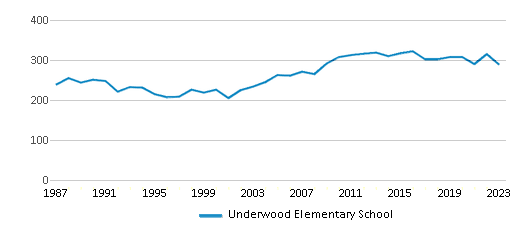
Gender %
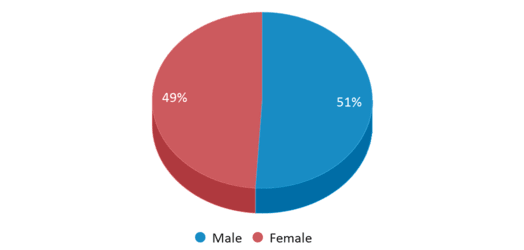
Total Classroom Teachers
23 teachers
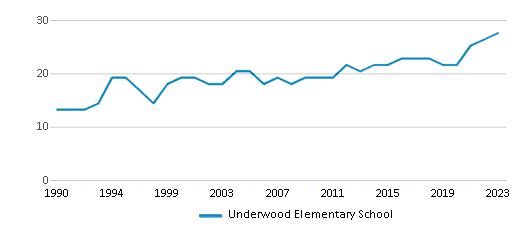
Students by Grade
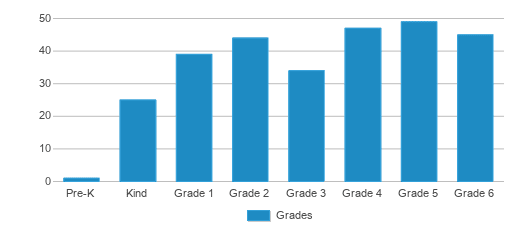
School Rankings
Underwood Elementary School ranks within the bottom 50% of all 1,860 schools in Minnesota (based off of combined math and reading proficiency testing data).
The diversity score of Underwood Elementary School is 0.14, which is less than the diversity score at state average of 0.59. The school's diversity has stayed relatively flat over five school years.
Overall Testing Rank
#1001 out of 1860 schools
(Bottom 50%)
(Bottom 50%)
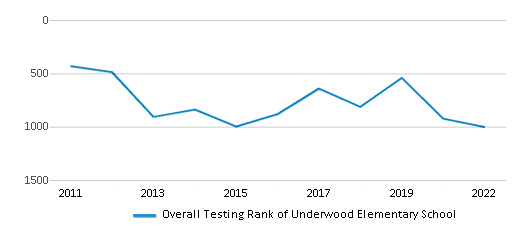
Math Test Scores (% Proficient)
45-49%
45%
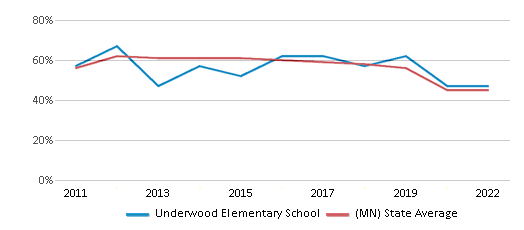
Reading/Language Arts Test Scores (% Proficient)
45-49%
51%
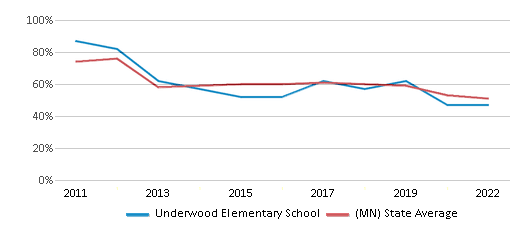
Science Test Scores (% Proficient)
30-39%
41%
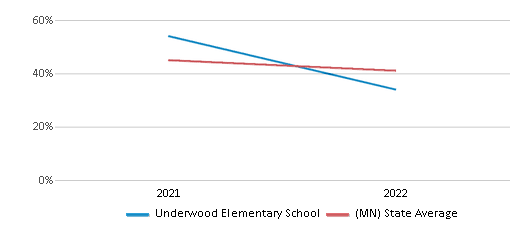
Student : Teacher Ratio
12:1
13:1
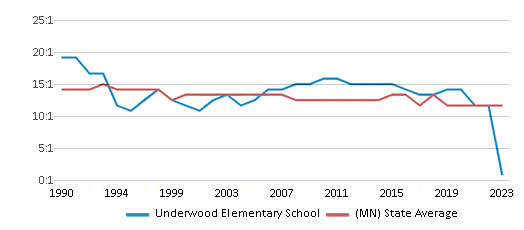
American Indian
1%
2%
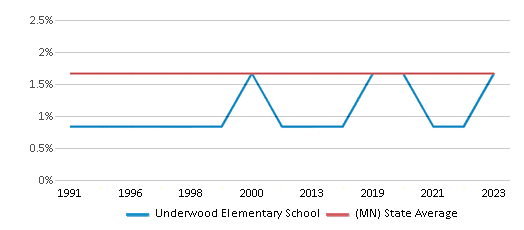
Asian
1%
7%
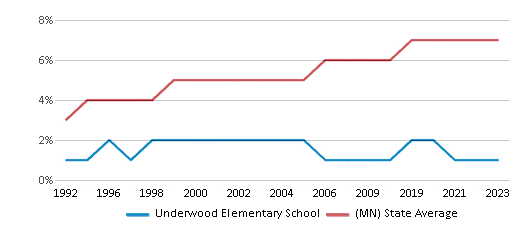
Hispanic
3%
12%
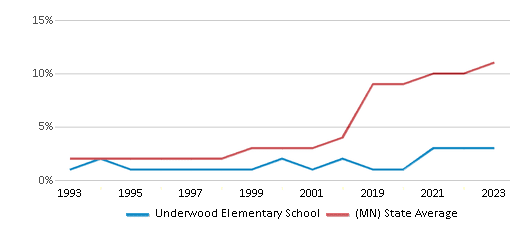
Black
1%
12%
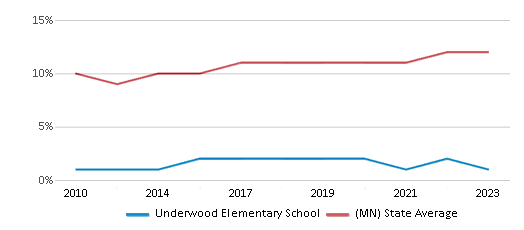
White
93%
61%
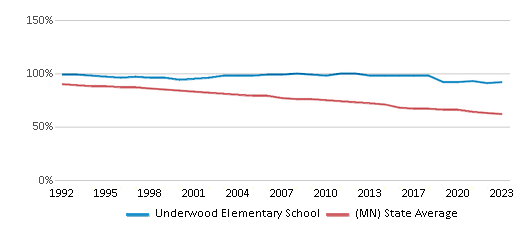
Hawaiian
n/a
n/a
Two or more races
1%
6%
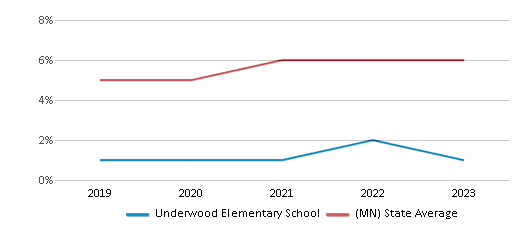
All Ethnic Groups
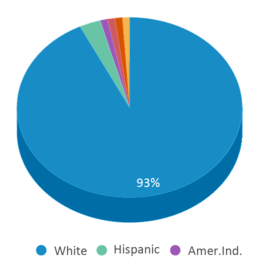
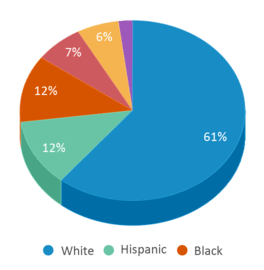
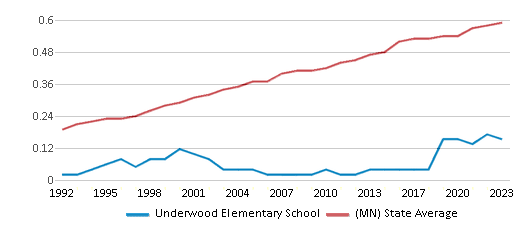
Participates in the National School Lunch Program (NSLP)
Yes
Eligible for Free Lunch
37%
36%
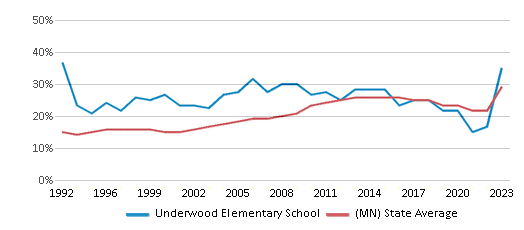
Eligible for Reduced Lunch
10%
7%
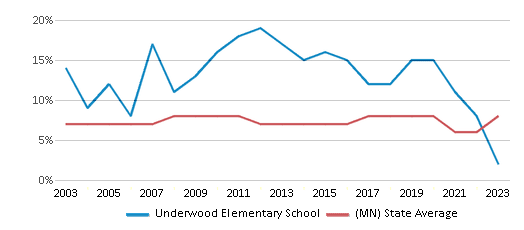
School Statewide Testing
School District Name
Source: National Center for Education Statistics (NCES), MN Dept. of Education
Profile last updated: 02/09/2025
Frequently Asked Questions
What is Underwood Elementary School's ranking?
Underwood Elementary School is ranked #1001 out of 1,860 schools, which ranks it among the bottom 50% of public schools in Minnesota.
What schools are Underwood Elementary School often compared to?
Underwood Elementary Schoolis often viewed alongside schools like Battle Lake Elementary School, Cleveland Elementary School by visitors of our site.
What percent of students have achieved state testing proficiency in math and reading?
45-49% of students have achieved math proficiency (compared to the 45% MN state average), while 45-49% of students have achieved reading proficiency (compared to the 51% MN state average).
How many students attend Underwood Elementary School?
284 students attend Underwood Elementary School.
What is the racial composition of the student body?
93% of Underwood Elementary School students are White, 3% of students are Hispanic, 1% of students are American Indian, 1% of students are Asian, 1% of students are Black, and 1% of students are Two or more races.
What is the student:teacher ratio of Underwood Elementary School?
Underwood Elementary School has a student ration of 12:1, which is lower than the Minnesota state average of 13:1.
What grades does Underwood Elementary School offer ?
Underwood Elementary School offers enrollment in grades Prekindergarten-6
What school district is Underwood Elementary School part of?
Underwood Elementary School is part of Underwood Public School District.
School Reviews
Review Underwood Elementary School. Reviews should be a few sentences in length. Please include any comments on:
- Quality of academic programs, teachers, and facilities
- Availability of music, art, sports and other extracurricular activities
Recent Articles
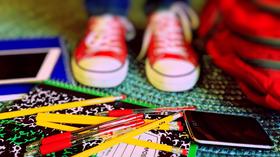
How Scaffolding Could Change the Way Your Child Learns
Every child learns differently and it’s a teacher’s job to meet students where they are and guide them through the learning process. Scaffolding is a teaching tool that helps students develop critical thinking skills and the ability to learn independently.
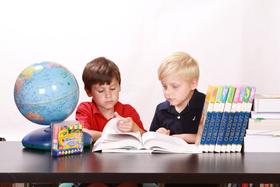
The Impact of Coronavirus on Public Schools
This article discusses the widespread impact of COVID-19 on public schools, addressing issues such as school closures, remote learning challenges, effects on standardized testing, and concerns about student progress. It also provides tips for parents suddenly faced with homeschooling responsibilities.

February 05, 2025
Understanding the U.S. Department of Education: Structure, Impact, and EvolutionWe explore how the Department of Education shapes American education, from its cabinet-level leadership to its impact on millions of students, written for general audiences seeking clarity on this vital institution.





